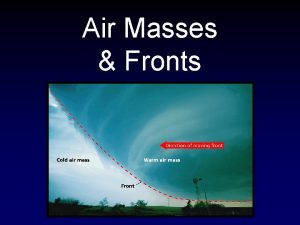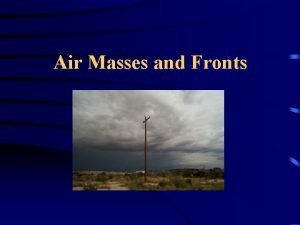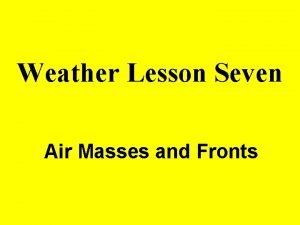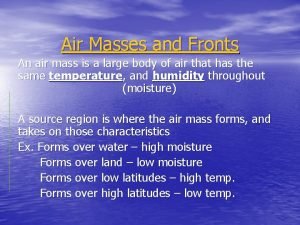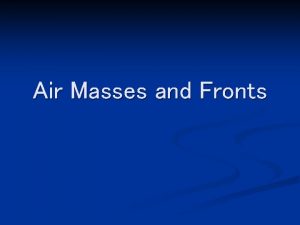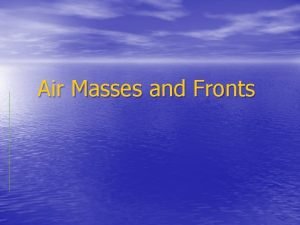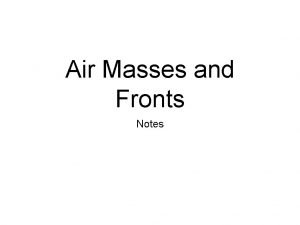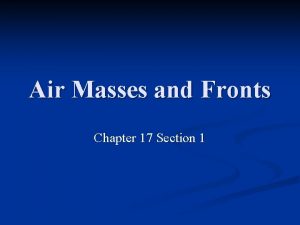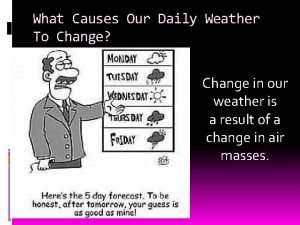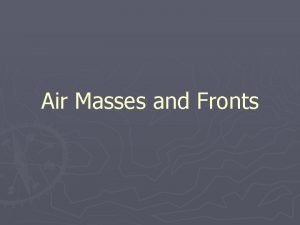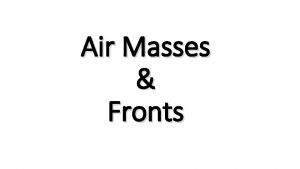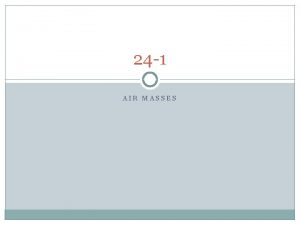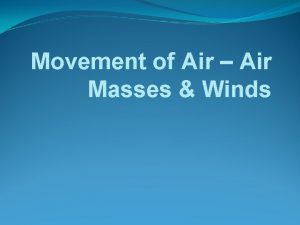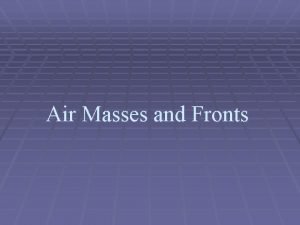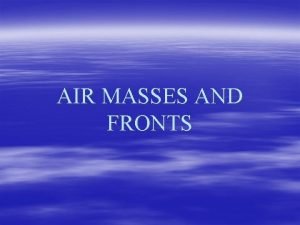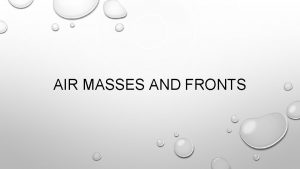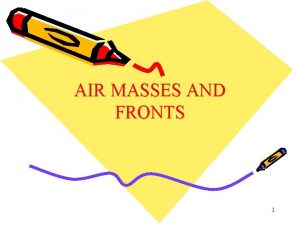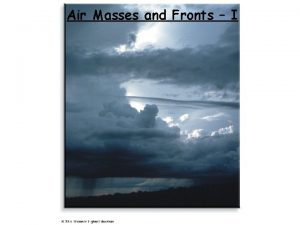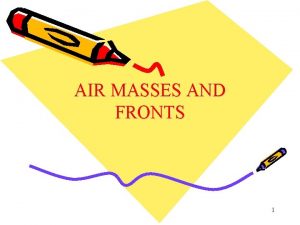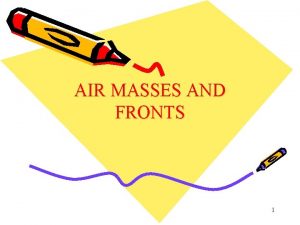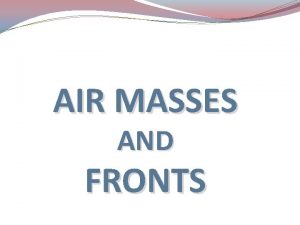Warm up Warm up Poirier AIR MASSES AND


















- Slides: 18

Warm up

Warm up

Poirier AIR MASSES AND FRONTS UNIT 4: WEATHER TEXT CHAPTER 17

Meteorology The study of processes that govern Earth’s atmosphere to help make weather predictions List as many things as you can think of that affect Earth’s atmosphere and the weather

Air Mass A large body of air in the lower troposphere that has uniform characteristics Similar temperature Similar humidity The interaction of air masses is what causes local weather.

North American Air Masses

What is a Weather Front? A Front is the boundary that separates opposing air masses Common in mid-latitudes (meeting place of polar and tropical air) Movement – interaction of air based on density (temperature humidity)

Cold Front Cold air mass moving in to replace warmer air More dense so moves under warmer air Pushes warmer air up (vertical flow) Brings Thunder storms in summer Less humid air Change in wind direction Short period of precipitation Moves about twice as fast as a warm front

Cold Front

Warm Front Warm air moves in and displaces cold air Less dense so rises up over the cold air Shallow slope less abrupt weather change Brings ~24 hours of increasing clouds starting with cirrus Overcast Prolonged period of precipitation After clearing warmer more humid conditions Moves about half as fast as a cold front

Warm Front

Occluded front When one cold front catches up with previous cold air mass Push warm air up Causes cloudiness and precipitation

Stationary Front When a front is no longer moving forward Warmer air rises, condenses, causes precipitation Flooding can occur

Materials hand outs Scissors Blue and red crayons Tape Turn in question sheet when finished

Review Moving Masses Answers

Passing of a low-pressure system Low pressure systems can be up to 2, 000 km across

Low pressure system Warm front, then cold front Approach of warm front, clouds increasing from cirrus to nimbostratus, steady rain Warm front passes, temp and humidity increase, winds shift, skies clear Approach of cold front, scattered showers or Tstorms Cold front passes, temp and humidity decrease, winds shift again, skies clear

Life cycle of a low-pressure system
 Two cold air masses converge on a warm air mass
Two cold air masses converge on a warm air mass Cold front air movement
Cold front air movement Air masses & frontswhat is an air mass?
Air masses & frontswhat is an air mass? Maritime tropical air mass symbol
Maritime tropical air mass symbol Polar air masses have low air pressure true or false
Polar air masses have low air pressure true or false Air masses & frontswhat is an air mass?
Air masses & frontswhat is an air mass? Air masses & frontswhat is an air mass?
Air masses & frontswhat is an air mass? Stationary front
Stationary front Air masses and their characteristics
Air masses and their characteristics Area of low pressure where air masses meet and rise
Area of low pressure where air masses meet and rise What are middle-latitude cyclones?
What are middle-latitude cyclones? Air mass
Air mass Air masses form in the tropics and have low pressure
Air masses form in the tropics and have low pressure Air masses in north america
Air masses in north america Which weather map symbol is used to represent violently
Which weather map symbol is used to represent violently Cold air mass overtakes warm air mass
Cold air mass overtakes warm air mass North american air masses
North american air masses Source regions for air masses
Source regions for air masses Drawing of cold front
Drawing of cold front

